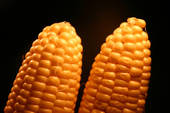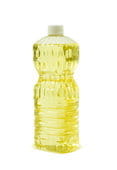by Mike Geary
 Do you eat these harmful foods that AGE you faster? Some are even deceptively marketed to you as “healthy” by giant food corporations. Avoid or minimize these and look 5-10 years YOUNGER than your real age.
Do you eat these harmful foods that AGE you faster? Some are even deceptively marketed to you as “healthy” by giant food corporations. Avoid or minimize these and look 5-10 years YOUNGER than your real age.
Due to biochemical reactions in your body that occur with every type of food you eat on a daily basis, some foods age you FASTER than your real age, while other foods help to FIGHT aging.
Eat the wrong foods regularly, and you can look and feel 10 or more years OLDER than your real age (not fun!) … but eat the right foods, and over time, you can start to look 5-10 years YOUNGER than your real age.
Three of the processes that go on inside your body that have a MAJOR impact on your rate of aging are called “glycation”, “inflammation”, and “oxidation”. When we talk about aging, we’re not just talking about wrinkles on your skin or how thick your hair is… we’re also talking about factors that you can’t see, such as how well your organs function, and whether your joints are degrading.
Yes, I’m sure you’ll agree this is much more important than just how you look on the surface (although we’ll show you how to improve BOTH!)
So let’s dig right in and I’ll show you how your rate of aging can be directly related to the foods you might eat every day, and how to protect yourself…
 Food #1 that ages you faster: Wheat (yes, even “whole wheat”)
Food #1 that ages you faster: Wheat (yes, even “whole wheat”)
Before I tell you why wheat can actually speed up the aging process in your body, let’s clarify some simple biochemistry in your body…
This deals with “glycation” in your body, and substances called Advanced Glycation End Products (AGEs). These nasty little compounds called AGEs speed up the aging process in your body including damage over time to your organs, your joints, and of course, wrinkled skin.
So with that said, what is one of the biggest factors that increase production of AGEs inside your body? This may surprise you, but high blood sugar levels over time dramatically increase age-accelerating AGEs in your body. This is why type 2 diabetics many times appear that they have not aged well and look older than their real age. But this age-increasing effect is not just limited to diabetics. It can affect everyone.
So, let’s get back to how “whole wheat” relates to this…
Here is a little-known fact that’s often covered up by the massive marketing campaigns by giant food companies that want you to believe that “whole wheat” is healthy for you… but the fact is that wheat contains a very unique type of carbohydrate (not found in other foods) called Amylopectin-A, which has been found in some tests to spike your blood sugar higher than even pure table sugar.
In fact, amylopectin-A (from wheat) raises your blood sugar more than almost any other carbohydrate source on earth based on blood sugar response testing.
This means that wheat-based foods such as breads, bagels, cereals, muffins, and other baked goods often cause much higher blood sugar levels than most other carbohydrate sources. As you know now, the higher your average blood sugar levels are over time, the more AGEs are formed inside your body, which makes you age FASTER.
You’ve probably heard about the potential health-damaging effects of gluten (also found in wheat) in the news recently, but this blood sugar aspect we just covered is not talked about that often, and is yet another reason to reduce or eliminate wheat-based foods in your diet. Your body will thank you by aging slower and looking YOUNGER!
In fact, my own dad, who is in his mid 60’s now, just removed 95% of the wheat from his diet about 3 months ago (aside from a little bit on 1 cheat day per week), and he’s noticed that his chronic joint pain has completely disappeared! Not only that, he also commented that he’s finally lost those “love handles” on his sides that have been plaguing him his entire adult life…All by reducing his wheat intake!
Another problem with wheat-based foods and aging…
As it turns out, baked wheat products contain carcinogenic chemicals called acrylamides that form in the browned portion of breads, cereals, muffins, etc. These carcinogenic acrylamides have been linked in studies to possible increased risk of cancer and accelerated aging. Note that acrylamides are also found in high levels in other browned carbohydrate sources such as french fries or any other browned starchy foods.
Don’t worry though… There’s a trick that you can use to protect yourself from these carcinogenic acrylamides, and it has to do with eating the RIGHT foods that COUNTERACT damage from these nasty chemicals. I’ll show you how to find the EXACT foods that protect your body on the next page!
Food #2 that ages you faster: Corn-based foods — corn syrup, corn cereal, corn chips, corn oil
 This is quite a variety of stuff that you might eat every day… we’re talking corn chips, corn cereals, corn oil, and also the biggest health-damaging villain that gets most of the media attention, high-fructose corn syrup (HFCS).
This is quite a variety of stuff that you might eat every day… we’re talking corn chips, corn cereals, corn oil, and also the biggest health-damaging villain that gets most of the media attention, high-fructose corn syrup (HFCS).
We already talked in detail in the last section about wheat regarding the blood sugar process and it’s relation to age-accelerating formation of nasty “AGEs” in your body.
Well, corn-based starchy foods such as corn cereals, corn chips, etc also have a big impact on blood sugar levels and therefore can increase AGEs in your body and accelerate aging.
But here’s another nail in the coffin for corn… it turns out that scientists have found out that the fructose in HFCS causes 10x more formation of AGEs in your body than glucose! Yes, that’s right… that means the HFCS you consume daily in sweetened drinks, and most other processed foods (yes, even salad dressings and ketchup) contribute to faster aging in your body… as if you needed yet another reason to avoid or minimize HFCS!
We’re not done yet with corn… it gets even worse…
Another major issue with corn-based foods and corn oils is that these foods contribute excessive amounts of omega-6 fatty acids to your diet, which causes an imbalance in your omega-3 to omega-6 ratio and leads to inflammation and oxidation within your body.
Once again… another example of corn-based foods aging you FASTER.
My advice: Avoid or reduce corn-based foods like corn chips and corn cereal as much as possible. These aren’t as bad as wheat in relation to blood sugar, and they don’t contain gut-damaging gluten like wheat does, but they are still bad for you. When it comes to corn syrup or corn oil, avoid as much as you can if you want to stay lean and young looking.
 Food #3 that ages you faster: Sugar, sugary foods, certain starchy foods
Food #3 that ages you faster: Sugar, sugary foods, certain starchy foods
Again, we get back to the relationship between your average blood sugar levels and blood sugar spikes over time, and how that can increase those age-accelerating compounds called AGEs in your body.
Sugar is an obvious one to avoid. You’ve heard how bad it is for you 1000 times before for many other reasons, including your waistline and developing type 2 diabetes. But now you also understand the aging effect of sugar.
Instead of sugar, consider using a natural non-caloric sweetener like Stevia in your daily coffee, tea, in baking, or other sweetening needs. This dramatically helps you control your blood sugar response and thereby help slow aging.
So this also means to think twice about sugary desserts, sugary cereals, candy, and other sweets that are contributing to aging you faster.
My personal trick to satisfy my sweet tooth is to only have 1-2 squares of dark chocolate after dinner instead of a normal full dessert that most people choose. You only get about 2 grams of sugar in 1-2 squares of dark chocolate as opposed to 40-80 grams of age-accelerating sugar in a typical cake, ice cream, or brownie type of dessert.
Keep in mind that some starchy foods like white rice, oatmeal, and white potatoes can also have significant impacts on your blood sugar and thereby can increase formation of AGEs in your body. These foods are best kept in smaller portions if you decide to eat them, and balanced with healthy fats and protein to slow the blood sugar response.
 Food #4 that ages you faster: Soybean oil, canola oil, or other “vegetable oils”
Food #4 that ages you faster: Soybean oil, canola oil, or other “vegetable oils”
I know these have been marketed to you over the years by giant food companies as “healthy”, but if you understand a little biochemistry about how these highly-processed oils react inside your body, you would quickly see how false that is.
First, anything labeled soybean oil, canola oil, corn oil, vegetable oil, or cottonseed oil (these are in a LOT of processed foods you probably eat) most times have undergone a refining process under extremely high heat and use of chemical solvents such as hexane.
This leaves you with an oil where the polyunsaturated fats have undergone a lot of oxidation and are therefore VERY inflammatory inside your body, producing free radicals, damaging your cell membranes, contributing to faster aging, heart disease, and other possible health problems.
If you want to avoid the health-damaging effects of soybean, canola, corn and other “vegetable oils”, make sure to avoid them as much as you can, and instead opt for truly healthy oils and fats such as extra-virgin olive oil, avocado oil, virgin coconut oil (a healthy source of MCT fats), and grass-fed butter (a great source of healthy CLA fats).

 Do you eat these harmful foods that AGE you faster? Some are even deceptively marketed to you as “healthy” by giant food corporations. Avoid or minimize these and look 5-10 years YOUNGER than your real age.
Do you eat these harmful foods that AGE you faster? Some are even deceptively marketed to you as “healthy” by giant food corporations. Avoid or minimize these and look 5-10 years YOUNGER than your real age. Food #1 that ages you faster: Wheat (yes, even “whole wheat”)
Food #1 that ages you faster: Wheat (yes, even “whole wheat”) Food #3 that ages you faster: Sugar, sugary foods, certain starchy foods
Food #3 that ages you faster: Sugar, sugary foods, certain starchy foods Food #4 that ages you faster: Soybean oil, canola oil, or other “vegetable oils”
Food #4 that ages you faster: Soybean oil, canola oil, or other “vegetable oils” I receive a lot of questions from my readers where they have been doing much better at choosing healthy breakfasts, lunches, and dinners, but they are still struggling to find good ideas for healthy and quick “mid-meals”… especially a quick small meal or snack that can be brought to the office or on road trips (so you can avoid the fast food junk!).
I receive a lot of questions from my readers where they have been doing much better at choosing healthy breakfasts, lunches, and dinners, but they are still struggling to find good ideas for healthy and quick “mid-meals”… especially a quick small meal or snack that can be brought to the office or on road trips (so you can avoid the fast food junk!).